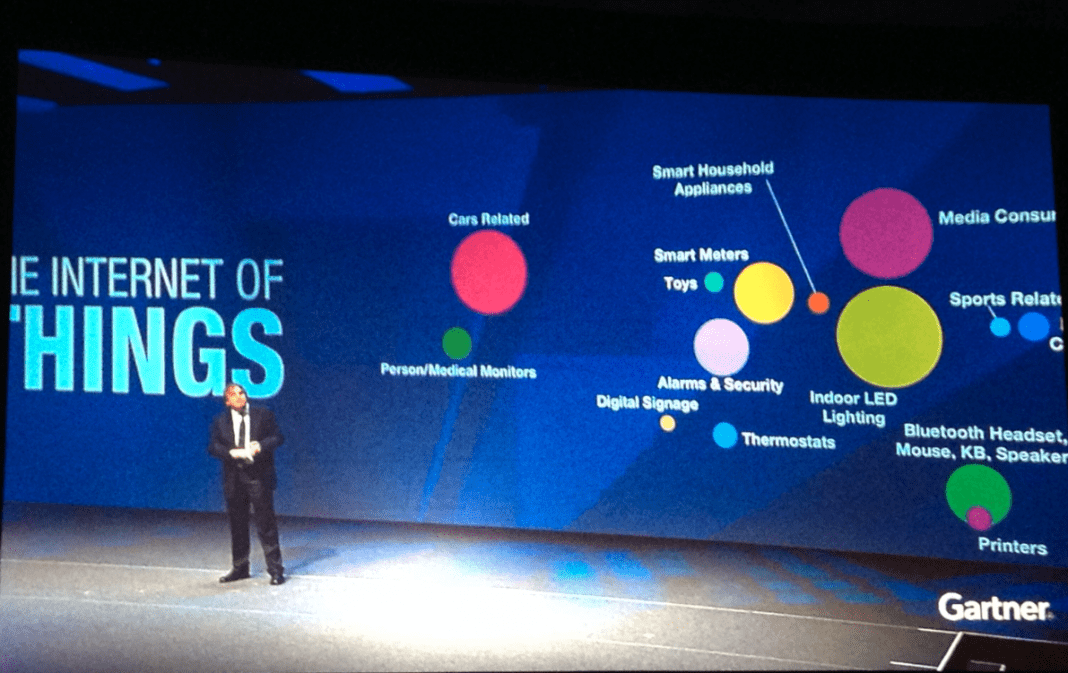
Where will our digital world take us by 2020? Gartner posed this popular question in its opening keynotes at multiple Symposia/ITxpos that I’ve had the fortune to attend. The answers would be great material for sci-fi, if only it were fiction.
At this week’s North American Symposium in Orlando, FL, leading Gartner analysts told more than 8,000 attendees from around the world that we’ve entered a digital industrial economy, which eclipses the scope of any prior economic cycle because it’s rooted in what Gartner calls the “Internet of Everything.” Everything is an enormous word, but Gartner uses it for a very good reason. Examples abound of how traditional competitive environments and markets are being turned on their heads and made largely irrelevant by another current reality: Everyone with access to the Internet can now be their own digital business.
Take hotels, for example, where the major chains no longer just battle each other, but, thanks to start-up services such as airbnb.com, are competing online for available beds in private condos, homes, and yachts. These online services are now matching travelers with available rooms or cabins that otherwise would go unoccupied. Similarly, another service in London is allowing homeowners to rent out their driveways for parking during certain hours. Following that trend, if you put the washer and dryer in the garage, there’ll be ROI on your appliances from renting them out to college kids down the street…and it’s an opportunity waiting for an app.
Gartner describes the process as dynamically exploiting transient opportunities and it will spark further services that are, as of yet, unimagined. It’s about capitalizing on business moments that come from nowhere and can happen at anytime.
The Need for Speed
In addressing the audience of enterprise IT and business leaders, Gartner said the driving force behind our new Digital Industrial Economy is the need for speed. “In today’s digital world, competition and winning are only a few seconds away,” said Gartner SVP Peter Sondergaard this morning in Orlando. Technologies will be increasingly sought after to analyze what’s happened and is happening in real time in order to effectively predict and capitalize on the future.
Beyond just person-to-person commerce, the Digital Industrial Economy will be driven rapidly by machine-to-person and machine-to-machine, via the Internet of Things—a market that Gartner predicts will eclipse $304 billion by 2020 with more than 30 billion “things” (essentially sensors connected to one another). And when the Internet of Things collides with the Nexus of Forces (Mobile, Social, Cloud, and Information) that Gartner has charted so well in recent years, the result is really Big Data—the kind of Big Data that makes everything to date look like small data.
According to Gartner, Big Data will be the source of value and profit more so than software or components in the near future, when all products selling for more than $100 will have built-in sensors, and those sensors and the software monitoring them remotely will be free. But the services provided by those billions of products reporting on their conditions and life cycle stages will provide incredible profit to those products’ vendors. It’s a new paradigm where data is the product instead.
Serious Economic Value
Another highlight of the Digital Industrial Economy and information-driven industries is that an estimated $1.9 trillion of economic value will derive from the Internet of Things by 2020, with remote monitoring in healthcare capturing 15%, manufacturing automation another 15%, insurance 11%, and banking and securities trading another 10%.
But all is not roses and champagne in the Digital Industrial Economy to come. Gartner points to the already evident shortage of organizational skills in our current market that are required to adequately leverage and support Big Data, and that skills shortage is the greatest inhibitor to digital growth. Integration is in the same shape, as most companies are still trying to catch up to the data management and interoperability requirements of the last decade.
And even more ominous are the cyber security risks inherent in 30 billion things interconnected to one another via an open Internet. One needn’t have screenwriting credentials to imagine the potential threats to business, governments, and human lives that could arise from hacking and potential unintended, yet dire, consequences. There are fascinating times ahead and plenty of disruption for those who aren’t ready for what’s to come.





